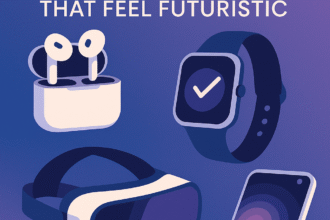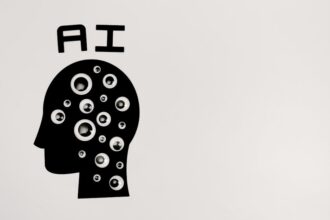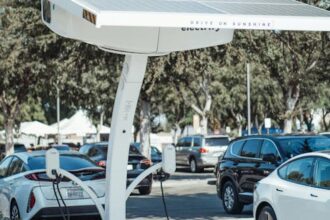The Quiet Revolution in Your Pocket, Kitchen, and Living Room
It’s 7:03 a.m. Your smart speaker gently fades in with your favorite morning playlist — not because you set an alarm, but because it learned your weekday wake-up pattern. As you shuffle to the kitchen, your coffee maker begins brewing, triggered by your phone’s geolocation. The fridge suggests a grocery list based on what’s running low — and what you’ve been Googling lately. Later, your earbuds translate a street sign in real-time during your commute. None of this feels like science fiction anymore. It’s Tuesday.
Welcome to the age of AI-powered gadgets — where artificial intelligence is no longer confined to research labs or Silicon Valley boardrooms. It’s embedded in your toaster, your toothbrush, your TV, and even your toilet. And it’s learning you — your habits, preferences, quirks, and rhythms — with unnerving precision.
This isn’t just convenience. It’s a fundamental reshaping of human-machine interaction. From predictive algorithms to neural networks humming inside household objects, AI is now the invisible hand guiding our daily routines. But how did we get here? And more importantly — where is this all going?
What Exactly Are AI-Powered Gadgets?
Before diving into examples, let’s define our terms.
AI-powered gadgets are consumer electronics or devices that utilize artificial intelligence — machine learning, natural language processing, computer vision, or predictive analytics — to perform tasks autonomously, adapt to user behavior, or enhance functionality beyond traditional programming.
Unlike “smart” devices that simply connect to the internet or respond to basic commands, AI gadgets learn, predict, and evolve. They don’t just execute — they anticipate.
Think of it this way:
- A smart thermostat turns on when you tell it to.
- An AI thermostat learns when you’re usually home, adjusts for weather forecasts, and optimizes energy use based on your behavior — all without you lifting a finger.
This distinction is crucial. AI doesn’t just add features — it adds intelligence.
The Rise of Ambient Intelligence
The term “ambient intelligence” was coined in the late 1990s by European researchers to describe environments that are sensitive and responsive to human presence. Two decades later, that vision is materializing — not in corporate HQs, but in suburban homes and urban apartments.
According to a 2024 report by Statista , the global market for AI in consumer electronics is projected to exceed $90 billion by 2027, growing at a CAGR of 28.5%. That’s not just growth — that’s an explosion.
What’s fueling it?
- Cheaper, faster processors (like NPUs — Neural Processing Units)
- Edge AI (on-device machine learning, reducing cloud dependency)
- Improved sensors (LiDAR, depth cameras, environmental sensors)
- Consumer demand for personalization
- Advancements in generative AI and LLMs (Large Language Models)
“Consumers don’t want more apps or more buttons,” says Dr. Lena Chen, AI Research Lead at MIT Media Lab. “They want devices that understand context — that know when to act, when to stay quiet, and when to ask for help. That’s the promise of ambient intelligence.”
Everyday AI: Where You’ll Find Artificial Intelligence in Your Home
Let’s take a room-by-room tour of the modern AI-augmented home.
🎙️ The Living Room: Where AI Listens, Watches, and Recommends
Your smart TV isn’t just streaming Netflix — it’s analyzing your viewing habits to recommend shows you didn’t know you’d love. Samsung’s 2025 Neo QLED TVs use AI Upscaling 3.0 to enhance low-res content in real-time using deep learning. Sony’s Bravia line uses AI to adjust brightness and contrast based on ambient light and even the genre of content you’re watching.
Then there’s the humble remote. Roku’s Voice Remote Pro uses NLP (Natural Language Processing) to understand contextual commands like “Find action movies from the 90s with car chases.” Not keyword matching — semantic understanding.
And of course, voice assistants. Amazon’s Alexa now runs on-device AI models for faster, more private responses. Google Assistant uses federated learning to improve speech recognition without uploading your voice data to the cloud.
🔗 Learn more: How Google Assistant Uses On-Device AI
☕ The Kitchen: AI That Cooks, Cleans, and Shops For You
The kitchen is becoming the AI battleground for appliance giants.
- Samsung Bespoke AI™ Refrigerator: Uses internal cameras and image recognition to track food inventory, suggest recipes based on expiry dates, and auto-generate shopping lists synced to Instacart.
- June Oven: An AI-powered countertop oven that recognizes food via camera and automatically sets time/temp. “Put in a salmon fillet? It knows. Put in last night’s pizza? It adjusts.”
- LG ThinQ AI Washers: Detect fabric type and soil level, then optimize wash cycle — saving water, energy, and your favorite sweater.
Even your coffee maker is getting smarter. The Spinn Coffee Maker uses AI to adjust grind, water temp, and brew time based on bean type and your past preferences — and learns if you like your Ethiopian pour-over “bright and citrusy” versus your Colombian “chocolatey and bold.”
🔗 Explore: LG ThinQ AI Appliances
🛏️ The Bedroom: Sleep, Health, and AI Wellness
Your bedroom is no longer just for sleeping — it’s a biometric monitoring station.
- Withings Sleep Analyzer: Tracks sleep apnea, heart rate, and snoring — then integrates with your smart thermostat to adjust room temp for optimal REM cycles.
- Eight Sleep Pod Pro: Uses thermal AI to heat or cool each side of the bed independently based on your body’s real-time needs.
- Amazon Halo Rise: An alarm clock that uses motion and light sensors to wake you during your lightest sleep phase — no jarring buzzers.
Even your mirror is watching. The HiMirror Mini analyzes your skin condition daily, tracks progress, and recommends skincare products — powered by computer vision and dermatological AI models trained on millions of skin images.
🚿 The Bathroom: Yes, Even Your Toilet Is AI-Powered Now
Japan led the charge, but the West is catching up. TOTO’s Neorest NX2 Intelligent Toilet uses AI to adjust water pressure, seat warmth, and air dryer settings based on user profiles. It even detects health markers in urine — yes, really — and syncs data to your phone via Bluetooth.
Meanwhile, Colgate’s Hum Smart Toothbrush uses AI coaching to analyze your brushing technique via motion sensors and gives real-time feedback through an app. Missed the back molars? It’ll tell you — and show you how to fix it.
🔗 Discover: TOTO’s AI-Enhanced Toilets
Wearables: AI on Your Wrist, In Your Ear, On Your Face
Wearables have evolved from step counters to full-fledged AI companions.
⌚ Smartwatches That Predict Health Crises
The Apple Watch Series 9 doesn’t just count steps — it can detect atrial fibrillation, falls, and even signs of sleep apnea. Using sensor fusion and machine learning models trained on millions of physiological data points, it alerts you — and emergency contacts — before you even feel symptoms.
Fitbit’s Sense 2 goes further: its EDA (Electrodermal Activity) sensor detects stress levels and triggers guided breathing sessions. Google’s acquisition of Fitbit has supercharged its AI capabilities — integrating search, maps, and health insights into a single wrist-worn interface.
🔗 Source: Apple Watch Health Features
🎧 AI Earbuds: Real-Time Translation, Noise Cancellation, Coaching
The humble earbud is now an AI powerhouse.
- Bose QuietComfort Ultra: Uses AI to isolate your voice in noisy environments — perfect for Zoom calls from a café.
- Sony LinkBuds S: Feature “Adaptive Sound Control,” which learns your locations (office, gym, subway) and auto-adjusts noise cancellation.
- Google Pixel Buds Pro: Offer real-time translation in 40+ languages — no app needed. Say “How do I get to the train station?” and it whispers the translation in your ear while your mouth is still moving.
🔗 Explore: Google Pixel Buds Pro Translation
👓 Smart Glasses: The Next Frontier
Meta’s Ray-Ban Smart Glasses now include on-device AI for real-time object recognition. Point at a plant — it tells you the species. Glance at a restaurant — it reads reviews aloud. All processed locally for privacy.
Snapchat’s Spectacles 4 are targeting creators with AI-powered editing tools — auto-captioning, background removal, even AI-generated filters based on your environment.
🔗 Read: Meta AI Smart Glasses
Behind the Scenes: How AI Actually Works Inside These Gadgets
So what’s happening under the hood?
Most AI-powered gadgets rely on a combination of:
1. Machine Learning Models (On-Device or Cloud-Based)
Devices like the iPhone 15 Pro or Pixel 8 run TensorFlow Lite or Core ML models directly on their Neural Processing Units (NPUs). This means your data stays local — faster, more private, and offline-capable.
2. Sensor Fusion
Your gadget isn’t relying on one sensor — it’s combining data from accelerometers, gyroscopes, mics, cameras, GPS, and environmental sensors. AI algorithms then “fuse” this data to infer context.
Example: Your phone knows you’re driving not because you opened Maps — but because it detected motion, connected to car Bluetooth, and noticed you’re on a highway at 9 a.m. — your usual commute time.
3. Edge AI vs. Cloud AI
- Edge AI: Processing happens on the device. Faster, private, works offline. Used in real-time translation, photo enhancement, voice assistants.
- Cloud AI: Heavy lifting done on remote servers. Used for training models, aggregating data, complex analytics.
The trend? Hybrid models. Process what you can locally, sync the rest to the cloud for deeper learning.
🔗 Deep Dive: Edge AI Explained by NVIDIA
The Dark Side: Privacy, Bias, and Over-Reliance
Not all that glitters is AI gold.
🕵️♂️ Privacy Concerns
When your fridge knows what you eat, your mirror knows your skin condition, and your toilet knows your… well, output — who owns that data? And where is it going?
A 2024 study by the Electronic Frontier Foundation found that 78% of AI-powered home devices share user data with third parties — often without explicit consent.
“Just because a device can collect biometric data doesn’t mean it should,” warns privacy advocate Eva Mueller. “We’re sleepwalking into a surveillance home.”
⚖️ Algorithmic Bias
AI learns from data — and if that data is biased, so is the AI.
Example: Early versions of smart soap dispensers failed to detect darker skin tones. Voice assistants misunderstood accents. Beauty AI apps rated lighter skin as “healthier.”
Manufacturers are improving — but bias testing must be part of the QA process, not an afterthought.
🧠 Cognitive Offloading: Are We Losing Skills?
Why memorize phone numbers when your AI assistant dials for you? Why learn cooking techniques when your oven does it all?
Psychologists warn of “cognitive offloading” — the gradual erosion of human skills due to over-reliance on AI. A 2023 University of California study found that frequent GPS users showed reduced spatial memory and navigation skills.
“The danger isn’t Skynet,” says cognitive scientist Dr. Raj Mehta. “It’s surrendering our agency — our ability to think, decide, and act — to machines that were meant to assist, not replace.”
The Future: What’s Next for AI-Powered Gadgets?
Buckle up. The next 5 years will make today’s tech look primitive.
🤖 Personal AI Agents
Imagine an AI that doesn’t just respond to commands — but proactively manages your life. Book flights when it detects you’re low on vacation days. Reschedule meetings when your stress levels spike. Negotiate your cable bill.
OpenAI, Google, and Apple are racing to build these “agentic AIs.” Samsung’s Galaxy AI already offers “Live Translate” and “Circle to Search.” This is just the beginning.
🔗 Source: Samsung Galaxy AI Features
🧬 Health Gadgets That Predict Disease
Future wearables won’t just track vitals — they’ll predict heart attacks, diabetic episodes, or mental health downturns weeks in advance — using biomarkers, voice tone analysis, and sleep anomalies.
The FDA has already approved AI algorithms for early detection of conditions like Parkinson’s — embedded in smartwatches.
🔗 Explore: FDA-Approved AI Health Algorithms
🏡 AI Homes That Design Themselves
Forget smart homes. The next wave is self-optimizing homes.
AI will rearrange furniture layouts via robotic arms (yes, really). Adjust lighting based on your circadian rhythm. Even suggest paint colors based on your mood — detected via voice or facial analysis.
IKEA and NVIDIA are prototyping “AI Home Co-Pilots” that simulate thousands of layout options before you lift a hammer.
🔗 Read: NVIDIA Omniverse for Smart Homes
🌍 Sustainability Through AI
AI gadgets aren’t just about convenience — they’re becoming tools for planetary survival.
Smart thermostats like Nest already reduce energy waste. Future AI fridges will minimize food spoilage. AI washing machines will optimize water use per region’s drought levels.
According to the International Energy Agency , AI-driven efficiency in homes could reduce global residential energy use by 10% by 2030 — equivalent to taking 200 million cars off the road.
How to Choose the Right AI-Powered Gadget (Without Regret)
With hundreds of “AI-enhanced” products flooding the market, how do you separate the revolutionary from the ridiculous?
Here’s your buyer’s checklist:
✅ Does it learn over time? (Not just pre-programmed responses)
✅ Is data processed on-device? (For privacy)
✅ Can you turn off AI features? (Control matters)
✅ Does the company publish transparency reports? (Bias, data usage)
✅ Is it interoperable? (Works with your existing smart home ecosystem)
Avoid “AI-washing” — marketing fluff that slaps “AI” on a product with no real machine learning. True AI adapts. It evolves. It surprises you — in a good way.
Final Thoughts: Living With Machines That Know Us Better Than We Know Ourselves
We stand at a peculiar moment in human history. Our gadgets don’t just serve us — they study us. They anticipate us. In some cases, they even care for us.
This isn’t dystopia. Nor is it utopia. It’s something messier, more complex — and more human.
The challenge isn’t stopping AI. It’s shaping it — with ethics, transparency, and intentionality. Because the gadgets we build today will raise our children tomorrow. They’ll care for our aging parents. They’ll manage our health, our homes, our happiness.
Let’s make sure they do it wisely.








